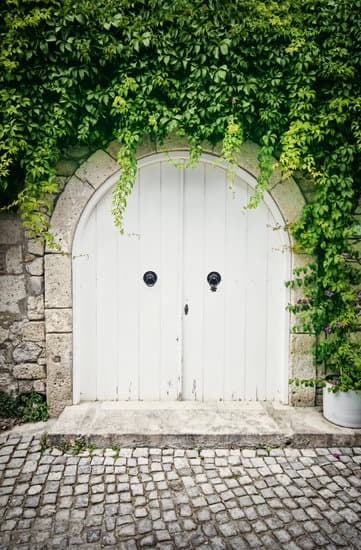What does a wedding ring symbolize? For centuries, wedding rings have held deep symbolic meaning in various cultures around the world. From representing eternal love and commitment to signifying unity and partnership, the significance of the wedding ring goes far beyond a simple piece of jewelry. In this article, we will explore the rich history and symbolism of wedding rings, from their origins to modern interpretations.
The tradition of exchanging rings as a symbol of marriage dates back to ancient Egypt, where reeds and rushes were twisted into circles to be worn on the fourth finger of the left hand, believed to have a vein that led directly to the heart. Over time, this custom spread to other cultures, each adding its own unique symbolism and rituals.
In this section, we will delve into the history of wedding rings, exploring their evolution through different civilizations and traditions. We will uncover how the concept of eternal love and commitment became intricately linked with the circular shape of the ring, setting the foundation for its ongoing significance in modern-day weddings. Join us as we embark on a journey through time to understand the timeless symbolism of the wedding ring.
The Significance of the Circle
The wedding ring is a universal symbol of eternal love and commitment. It represents the unending circle of love, a bond that cannot be broken, and is often worn on the fourth finger of the left hand, which is believed to have a vein that leads directly to the heart. This timeless symbol has been part of marriage customs for centuries, with its roots dating back to ancient Egypt and Rome.
The circular shape of the wedding ring holds significant meaning in many cultures. The unbroken circle represents the never-ending love between two people, as well as their commitment to each other.
This symbolizes the idea of “until death do us part,” reflecting the enduring nature of marriage. The exchange of rings during a wedding ceremony serves as a public declaration of a couple’s dedication to one another, with the promise to support and cherish each other for a lifetime.
In addition to its shape, the materials and design of wedding rings also hold symbolism. The choice of metal can convey different meanings, with gold representing wealth and prosperity, silver symbolizing purity and clarity, and platinum signifying strength and endurance.
Some couples also opt for personalized designs or engravings that hold special significance to their relationship, adding another layer of emotional symbolism to their wedding rings. Overall, the significance of the circle in wedding rings embodies the enduring love and commitment between partners as they embark on their journey together as husband and wife.
- The never-ending circle symbolizes eternal love
- It represents the unbreakable bond between two people
- The choice of metal and design adds personal meaning
Materials and Design
When it comes to wedding rings, the choice of materials and design holds a significant amount of symbolism. The most common materials for wedding rings are gold, silver, platinum, and titanium, each carrying its own meaning. For example, gold is often associated with wealth and prosperity, but it also symbolizes endurance and strength.
Silver is known for its purity and is often related to clarity and vision. Platinum represents rarity and durability, making it a popular choice for couples who value longevity in their marriage.
In addition to the material, the design of the wedding ring also holds symbolism. Many couples opt for a simple band with no additional adornments as a representation of their commitment being pure and unwavering. Others may choose intricate designs or engravings that hold personal significance to them as a couple. Some even incorporate gemstones into their wedding rings, where each stone may carry specific meaning related to love or fidelity.
Ultimately, the choice of materials and design in wedding rings is deeply personal and varies from couple to couple. Whether it’s the material’s symbolic meaning or a custom-designed ring that represents something unique to the partners involved, the decision offers an opportunity for couples to express their individual values within their shared commitment.
| Material | Symbolism |
|---|---|
| Gold | Wealth, endurance, strength |
| Silver | Purity, clarity, vision |
| Platinum | Rarity, durability |
Cultural Traditions
Symbolism in Different Cultures
The meaning of wedding rings varies greatly across different cultures around the world. In some cultures, such as in India and Mexico, toe rings are used as a symbol of marriage. In others, such as in Celtic traditions, the Claddagh ring is worn with the intention to convey love, loyalty, and friendship. Understanding the diverse symbolism behind wedding rings can provide insight into the values and traditions of different societies.
Rituals and Customs
In some cultures, the exchange of wedding rings is a deeply rooted ritual that involves specific customs and ceremonies. For example, in Jewish tradition, the groom places the wedding ring on the bride’s index finger during the ceremony. In Filipino culture, it is common for couples to exchange “pamamanhikan” rings during their engagement as a symbol of their commitment to marry.
Historical Perspectives
The historical significance of wedding rings in various cultures also offers an intriguing glimpse into their symbolic value. For instance, in ancient Egypt, wedding rings were believed to be symbols of eternity and were often made from materials such as hemp or reeds. Exploring these historical perspectives can shed light on the evolving meanings and traditions associated with wedding rings over time.
The Exchange of Rings
The exchange of wedding rings during a marriage ceremony is a deeply symbolic act that represents the unity and partnership between two individuals. This tradition, which dates back centuries, holds significant meaning in various cultures around the world. Here are some key ways in which the exchange of rings symbolizes unity and partnership:
- Symbol of Commitment: The act of exchanging rings serves as a public declaration of the couple’s commitment to each other. By placing the ring on their partner’s finger, they are symbolizing their promise to remain faithful and devoted to one another.
- Circle of unending love: The circular shape of the wedding ring represents eternity and unending love. Just like the ring has no beginning or end, it signifies the timeless nature of the bond between the couple. It serves as a constant reminder of their enduring commitment to each other.
- Equal Partnership: The exchange of rings also symbolizes the equal partnership between the spouses. It signifies that both individuals are making a conscious choice to enter into a shared life together, where they will support and care for each other through all of life’s ups and downs.
In many wedding ceremonies, the exchange of rings is accompanied by vows or promises made by the couple to each other. This further emphasizes the symbolism behind this tradition and reinforces their dedication to unity and partnership in marriage.
Family Heirlooms
Preserving Tradition
Passing down wedding rings from one generation to another is a tradition that holds deep symbolism. It signifies the continuity of love, commitment, and family ties through the ages.
Many families cherish the idea of passing down their wedding rings as a symbol of the enduring nature of marriage and the values that come with it. The act of passing down wedding rings also serves as a reminder to future generations of the love and dedication that their ancestors had for one another.
Symbolic Meaning
In many cultures, passing down wedding rings is not only a sentimental gesture but also carries an inherent symbolic meaning. It represents the values and traditions that have been upheld by the family for generations.
The wedding ring becomes a physical embodiment of the love stories and enduring marriages that have stood the test of time within the family. It signifies a connection between past, present, and future, creating a sense of continuity and belonging for those who inherit these precious heirlooms.
Emotional Value
For those who receive a passed-down wedding ring, the emotional value far surpasses its material worth. These rings become cherished heirlooms that hold stories of romance, commitment, and endurance. They serve as reminders of ancestors’ love stories, triumphs, and sometimes even hardships endured throughout their marriages.
As a result, passed-down wedding rings often evoke strong emotions and feelings of gratitude for being entrusted with such meaningful symbols. They become treasured possessions that connect individuals to their family’s history while also serving as constant reminders of what true love and commitment represent.
As seen in this section on passing down wedding rings, these heirlooms hold deep significance in preserving tradition, carrying symbolic meaning across generations, and holding immense emotional value for those who inherit them. In essence, passing down wedding rings embodies the timeless symbolism associated with these precious symbols of love and commitment.
Modern Interpretations
In today’s modern society, the symbolism of wedding rings has evolved to reflect changing values and attitudes towards marriage and commitment. Traditionally, wedding rings have been seen as a symbol of eternal love and commitment, representing the unending circle of marriage. However, as societal norms continue to shift, so too does the meaning and symbolism associated with these cherished pieces of jewelry.
For many couples, the emphasis on the symbolism of a wedding ring has shifted from traditional notions of eternal love to a more personal and individualized representation. Some individuals may choose to forgo traditional materials such as gold or platinum in favor of alternative options that hold personal significance.
Whether it be a non-traditional metal like titanium or an eco-friendly alternative such as wood or recycled materials, these modern interpretations of wedding rings reflect a departure from conventional symbolism in favor of personalized expressions of love and commitment.
Furthermore, with an increasing number of couples choosing non-traditional paths to marriage, the symbolism of wedding rings has expanded to encompass a wider spectrum of relationships. Same-sex couples, for example, have redefined the traditional symbolism attached to wedding rings by imbuing them with their own unique meanings that celebrate love and partnership regardless of gender.
As such, modern interpretations of wedding ring symbolism honor the diversity and inclusivity found within contemporary relationships, showcasing the evolving nature of these timeless symbols.
Personal Stories
A wedding ring is not just a piece of jewelry; it carries deep emotional symbolism for the couple wearing it. For many, a wedding ring symbolizes love, commitment, and unity. It is a physical representation of the emotional bond between partners and serves as a constant reminder of their vows to each other.
For some couples, the choice of wedding rings holds special significance. The design, material, and even the engraving on the rings can hold personal meaning. Some may choose to incorporate a birthstone or a particular metal that has sentimental value. This personalized touch adds an extra layer of emotional symbolism to the wedding rings.
In addition to the physical attributes of the rings, personal stories often accompany them. Whether it’s the story behind how the couple chose their rings or the history behind family heirlooms being passed down through generations, these narratives add depth to the emotional symbolism of wedding rings.
| Emotional Symbolism | Personal Meaning |
|---|---|
| Love | The emotional bond between partners |
| Commitment | A constant reminder of vows |
| Unity | Symbolizing partnership and togetherness |
Conclusion
In conclusion, the wedding ring symbolizes eternal love, commitment, and unity. Throughout history and in various cultures around the world, the circle of the ring represents an unending bond between two people. The choice of materials and design also carries significant symbolism, whether it be the durability of a metal like platinum or the sentimental value of a family heirloom.
While cultural traditions may vary in the meaning of wedding rings, the exchange of rings during a marriage ceremony universally symbolizes the unity and partnership between partners. It is a visible and tangible representation of their love and commitment to each other.
In modern times, the symbolism of wedding rings continues to evolve as societal views change. However, personal stories from individuals about their wedding rings continue to emphasize their emotional significance. Whether it’s a modern interpretation or an ancient tradition, the wedding ring remains a timeless symbol of love and commitment that holds immense value for couples around the world.
Frequently Asked Questions
What Is the Symbolism of the Wedding Ring?
The wedding ring is a symbol of commitment, love, and unity between the couple. Its circular shape represents eternity and the never-ending bond between husband and wife.
Why Is the Ring So Important in Marriage?
The ring is important in marriage because it serves as a visible reminder of the vows exchanged during the wedding ceremony. It signifies the couple’s promise to remain faithful and devoted to each other for the rest of their lives.
What Does the Bible Say About a Wedding Ring?
While the Bible does not specifically mention wedding rings, it does emphasize the sanctity and importance of marriage. In Christianity, marriage is seen as a sacred covenant before God, and the exchange of rings is a way to symbolize this sacred commitment between spouses.

I have been involved in marriages for over 20 years helping couples and singles understand more about them.





